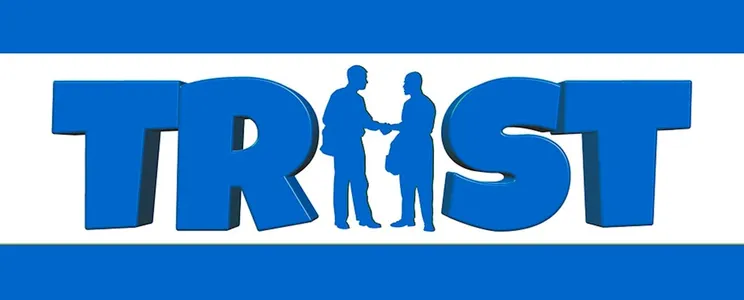Being an all-cash person isn’t necessarily a bad thing, but it probably means you’ve got little or no credit history to speak of — which can come back to bite you when you finally do need to apply for a loan or line of credit. I see it all the time with customers trying to purchase a car at Don Ayres Honda where I work.
How? Without a credit history, you won’t have a credit score, so you either won’t be approved by future lenders or may have to deal with some unfavorable lending terms, like paying higher interest rates. Plus, you could even miss out on a sweet rental or job opportunity — both landlords and employers have been known to check out an applicant’s credit history.
But starting on the right foot when it comes to building credit isn’t as hard as you might think. In fact, you can by tackling a few basic steps.
STEP 1: GET YOUR HANDS ON A CARD
If you don’t have at least a passable credit history, actually getting a traditional (aka, unsecured) credit card in your name can be surprisingly difficult. Card issuers want to know that you’ll pay back the money you charge, so proving you’re trustworthy is tough with no credit history.
So if you can’t get approved for an unsecured card, consider signing up for a secured credit card. Though you have to put money down upfront as insurance against nonrepayment, you can use a secured card just like a standard one to make purchases. The deposit you put down is typically what your credit limit will be.
Another option is to piggyback on a parent’s, spouse’s or friend’s credit card account. If they add you as an authorized user, you’ll get your own card and be able to make purchases. Just make sure that you’re responsible with that person’s credit line, and you’ve agreed on how you’ll use or help pay for the card. After all, there are two people’s credit histories on the line. On the same note, make sure the line of credit you're being added to has a good history, otherwise the negative history will be the first thing on your credit report.
Your activity as a secured cardholder or an authorized user is reported, in most cases, to the three major credit bureaus: Experian, Equifax and TransUnion. (Check with your card’s customer service rep to confirm.) As you use your card, you’ll be building your own credit history.
Of course, before you sign up for any type of card, make sure you understand the terms of the offer (including fees and your annual percentage rate). You’ll want to weigh your options carefully and choose the best card for your lifestyle.
STEP 2: LOVE A LOW CREDIT UTILIZATION RATIO
Building your credit isn’t complicated, but it does take time, discipline and a bit of knowledge.
A recent survey from LendEDU found that nearly 44% of millennials believe using more of their available credit translates to a higher credit score — but the opposite is actually true.
In reality, lenders worry that you’re in over your head financially when you spend a big chunk of your credit line. To help assess this, they’ll look at your credit utilization ratio, which is the percentage of your total credit limit that your current balance represents. For instance, if all your cards give you access to $20,000 of credit, and your current balance is $5,000, you’ve got a credit utilization ratio of 25 percent.
Credit scoring models like FICO, which rate your creditworthiness, reward low credit utilization ratios. In fact, Americans with the very best FICO scores — 800 to 850 — use, on average, just 7 percent of their available credit limits.
STEP 3: GET SERIOUS ABOUT DUE DATES
If there’s one thing that’s even more important to your credit score than a tiny credit utilization ratio, it’s your payment history. In fact, a massive 35 percent of your FICO score is based entirely on how responsible you are with your bill payments.
- Put fool-proof systems in place for paying every single bill on time:
- Set up reminders to open and pay new bills.
- Create calendar events or notifications through your creditors’ online portals so you’re alerted several days before each bill’s due date.
Request recurring transfers or autopay via your bank. Your bill payments will be pulled directly out of your checking account without your needing to do a thing. Just make sure you’re setting an autopay amount that is still doable for your budget — although your goal should really be to pay off your balances in full every month.
As you establish a pattern of prompt payments, your credit score will likely increase. Plus, you’ll minimize the fees and interest charges that come with missed payments and can lead to spiraling debt.
STEP 4: TRACK YOUR PROGRESS
To achieve — and maintain — an awesome credit history, you should keep tabs on how well your credit-building strategy is succeeding. Fortunately, it’s easy to figure that out, and typically it’ll cost you nothing: You’re legally entitled to three free credit reports every year.
Lenders pull your credit report when you’re shopping for credit, so you should know what they’re looking at. Your credit report details what loans and lines of credit you have open, as well as ones you’ve closed; how well you’ve paid past bills; how much of your credit you’re using; the age of your accounts; and whether you’ve run into recent financial troubles (bankruptcies, foreclosures, accounts in collection, etc.).
Whenever you pull your report, double-check all the information that’s presented. Call the reporting agency — i.e., Experian, Equifax or TransUnion — to contest false records. And if your report shows accounts or activity you don’t recognize, request a free fraud alert as well. You can prevent a lot of the pain that identity theft causes by catching and stopping it early.
Plus, some credit card companies will show your score on your monthly statement, or you can sign up on a site like Credit Karma or Credit.com to see it for free. There are also paid services that will keep tabs on your credit score for you. Keeping an eye on your score is key to mapping your journey from no credit to killer credit.












